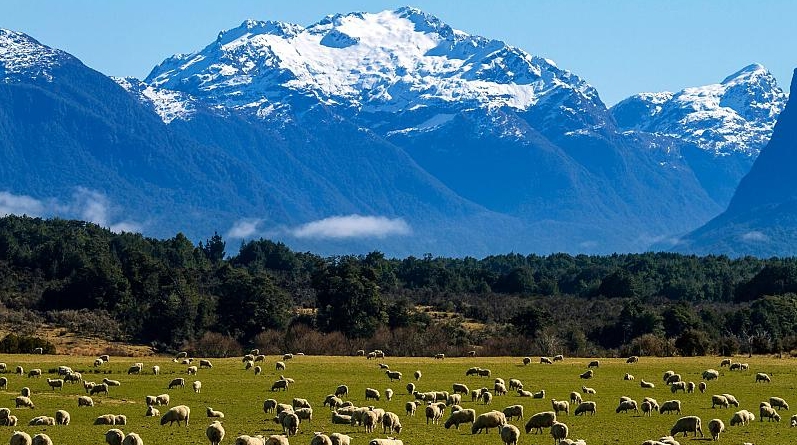After two years, the first foreign tourists and travellers are returning to New Zealand.
But the tiny island nation, world-famous for its unspoilt natural landscape, has a message for visitors.
“The future will not be like the past.”
These are the words of Aotearoa Tourism Industry (TIA) chief executive Rebecca Ingram. But they encapsulate the transition – to regenerative, sustainable travel – that the whole industry is embracing.
Why is New Zealand so popular with tourists?
Before the pandemic, New Zealand (also known as Maori Aotearoa) was a global tourism hub.
Between 2016 and 2019, around 11 million tourists visited the island nation with a permanent population of just 5 million.
In the picturesque Milford Sound of Piopiotahi, the number of cruise ship visits has almost quadrupled in 13 years, peaking at 133 in 2019.
The annual number of visitors to the Sound is predicted to exceed one million tips in 2020.
High waterfalls , rugged beaches and snow-capped mountains are all packed with visitors.
Then the pandemic struck and the country closed its borders.
A TIA survey showed that amid huge economic problems – the average tourist business laid off 40% of its staff and revenues halved in the year to May 2021 – there is room for reflection.
How has the pandemic changed tourism in New Zealand?
For two years, cruises unloading their passengers in port cities and tourists nosing around the South Island have been a distant memory. Some communities and locals loved it.
“As an industry, we listened to the concerns of some communities before the pandemic about the growth of tourism and how it affects their lifestyle and environment,” says Rebecca Ingraham.
“Changes have been made to make New Zealanders proud of the New Zealand tourism experience.”
The government has passed new laws restricting “camping freedom” . While local communities have written destination management plans to protect against “‘overcrowding’ and the negative effects of tourism.”
At Milford Piopiotihi with oversubscription proposals include limiting daily admission to 4,000 and introducing fees for overseas campers.
“The last two years have given us an opportunity to think about how we can better manage our tourism industry,” says Ingram.
Individual tourism businesses are also keen to “go green”: 1,600 companies have signed up to the TIA’s “sustainability pledge”.
Carino Wildlife Tours in the beautiful Bay of Islands is one such operator.
According to Carino managing director Vanessa Mackay, the tour is also a “citizen science” project. Each cruise collects data on the numbers of penguins, sharks, rays and dolphins .
“It’s about enjoying your holiday and then adding to it. The visitors are sea caitiacs (keepers). We let them take over,” she explains.
“It’s about making the place better than you found it. It’s about the next generation. It’s really about the children.”
Wildwire Wanaka is another business that makes a difference.
According to director Mark Morrison, the attraction – the world’s tallest rope waterfall – wants to become carbon positive.
“Our vision is to be completely regenerative,” he says.
“Whenever visitors come to us, we want them to help us with conservation… Whether it’s checking traps to bring birds back to the area, or carrying seeds along the way that guests use to plant new trees.”
“Our aim is to get the community to see the tourists and get excited about being here because they know they are giving back to the community.”
What is the Tiaki Promise?
The pandemic has accelerated the transition to sustainability , but Aotearoa has long been a world leader in regenerative tourism.
Since 2019, foreign visitors to national parks have had to pay a fee of NZ$35 (US$25).
However, the shift is also psychological. In 2018, the New Zealand Tourism Authority launched the Tiaki Promise programme. Tiaki means ‘care’ on Maori territory.
“While in New Zealand, I will take care of the land, sea and nature by treading lightly and leaving no footprints,” reads the pledge, which visitors are encouraged to take.
Advice included getting rid of drones and being careful not to spread pests that threaten the country’s unique biodiversity.
The pledge is inspired by the rich Maori tradition of respect and reciprocity with the natural landscape, explains Oscar Nathan, general manager of Bay of Plenty tourism.
“The revival concept is not new, it is based on the idea that everyone is connected to the environment and should respect it – a belief embedded in Te Ao Maori (the Maori world).
When the first foreign visitors in two years land in New Zealand, the beleaguered tourism industry will welcome them with open arms. But they will also ask them to proceed with caution.

